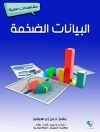separated by the exigencies of the design life cycle into another compartment, that makes invisible the (prior) technical work of engineers that is not directly pertinent to the application work of practitioners. More recently (and notably after the work of Greisemer and Star) the black box has been opened and infrastructure has been discussed in terms of the social relations of an extended group of actors that includes developers. Ethical and political issues are involved (cf f accountable computing). Writing broadly within this context, Day (chapter 11) proposes that the concept of ‘surface’ can assist us to explore space as the product of ‘power and the affective and expressive role for materials’, rather than the background to this. Surfaces are the ‘variously textured…sites for mixtures between bodies’, and are thus the ‘sites for events’. The notions of ‘folding’ and ‘foldability’ and ‘unfolding’ are discussed at length, as metaphors that account for the interactions of bodies in space across time. Some of the contributors to this volume focus on ways in which we may experience multiple infrastructures. Dix and his colleagues, for example, in chapter 12 explore a complex of models – of spatial context, of ‘mixed reality boundaries’ and of human spatial understanding across a number of field projects that make up the Equator project to explain the ways in which co-existing multiple spaces are experienced.
Table des matières
An Introduction to Spaces, Spatiality and Technology.- The Digital Uncanny.- En-Spacing Technology.- Shifting Presence in the Classroom.- The Public Library.- Understanding Spatiality.- Public Place as a Resource of Social Interaction.- Privacy Zoning.- High-Fidelity Mapping of Intellectual Space.- Escape from Surface and Linearity.- “Surface”: Material Infrastructure for Space.- Multiple Spaces.- An Existential Approach to Representing Visual Context.- Performative Uses of Space in Mixed Media Environments.- Space, Place and the Design of Technologically-Enhanced Physical Environments.- Augmenting Communal Office Spaces with Large Screens to Support Informal Communication.- Articulating the Sense of Place Experienced by Visitors to the Jencks Landform.- Multiscale Space and Place.- The Tourist Gaze: Towards Contextualised Virtual Environments.












